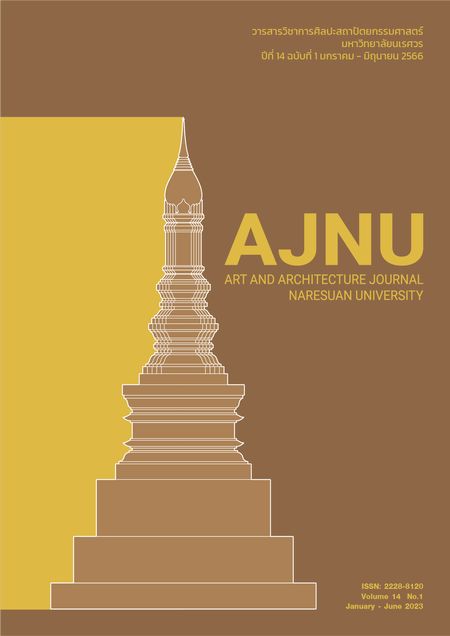The guideline to create a social participation from the concept of active aging
Main Article Content
Abstract
This research article is approaches to social participation among the elderly in Thailand. From population aging and Thailand will become a super aging society in soon. The study of this research article based on the concept of Active aging. Which is represent a complete of well-being and improving the quality in the elderly. The purpose of study was analyzed the activities in the elderly clubs that related to social participation. The criteria of analyzed get from the literature review. A total of 16 activities that were selected as a case studies. The results of this study found that. 1) Social support, counsulting can encourage elderly confidence to try to do activities that never done before. And the role of mentor in activities will be create pride in sharing knowledge with others. 2) Activity Theory, activities that meet a need to participants. Activity pattern, appropriate activity level and generating income from activities. that can create economic stability for the elderly was found that affect to social participation. 3) The principle of participation, All activities did not take part in all principles. It was found that the activity model did not encourage the elderly to take part in all principles. 4) Design principles, It was found that correlation with the use of devices and tools of activities. Dose not cover the pattern of social activities. Design principles in the activities of the elderly are designed to be consistent with the use efficiency, perception and familiarity, safety, aesthetics of the device and maximize the utilazation of the device and tool. The results of the study was synthesized into principles for promoting social participation. By promotion potential, perceived confidence, motivation and facilitation. As a guideline for social participation of the elderly in Thailand
Article Details

This work is licensed under a Creative Commons Attribution-NonCommercial-NoDerivatives 4.0 International License.
References
กรมกิจการผู้สูงอายุ. (2564). สถิติผู้สูงอายุ. สืบค้นเมื่อ 17 กุมภาพันธ์ 2564, จาก http://www.dop.go.th/
th/know/side/1/1/335
เชียง เภาชิต และคณะ. (2559). การพัฒนารูปแบบกิจกรรมส่งเสริมผู้สูงอายุในจังหวัดนครสวรรค์. วารสารสุทธิปริทัศน์, 30(94),
-127
วชิรวัชร งามละม่อม. (3 กุมภาพันธ์ 2559): ทฤษฎีการมีส่วนร่วม. สืบค้นเมื่อ 20 เมษายน 2564,
จากhttp://learningofpublic.blogspot.com/2016/02/blog-post_79.html
ศศิพัฒน์ ยอดเพชร, เล็ก สมบัติ, ณัฏฐพัชร สโรบล และธนิกานต์ ศักดาพร. (2555). ลักษณะการดำเนินงานกิจกรรมของ
ผู้สูงอายุ (รายงานวิจัยฉบับสมบูรณ์). กรุงเทพฯ:มหาวิทยาลัยธรรมศาสตร์.
สำนักงานสถิติแห่งชาติ. (2560). ดัชนีพฤฒพลังผู้สูงอายุไทย. กรุงเทพ: เท็กซ์ แอนด์ เจอร์นัลพับลิเคชั่น จำกัด
Cobb, s. (1976). Social support as a moderator of life stress. Phychosom Med. 38:300-14
Fisher, B and Specht, D. (1999). Successful aging and creativity in later life. Journal of Aging and Study.
(5):457-472
Garatachea, N et.al. (2009). Felling of Well Being in Elderly People: Relationship to Physical Activity and
Physical Function. Archives of Gerontology. 48:306-312
Greaves, c. (2006). activity on the health andwell-being of socially isolatedolder people: outcomes from a
multi-method observational study. JRSH, 126(3), 134-142
Herzog, A et.al. (1989). Age differences in productive activities. Journal of Gerontology. 44(4):129-138
HSU, H. (2008). Does social participation bt elderly reduce mortality and cognitive impairment?.
Aging&Mental Health. 11(6):699-707
Kruse, N. (1987). Life stress, social support, and self-Esteem I an elderly population. Psychology and Aging,
(4), 349-356
Post Today. (20 เมษายน 256): สสส.เตือนอีกไม่เกิน15ปีวัยทำงานแบกภาระเลี้ยงผู้สูงอายุ-เด็ก. สืบค้นเมื่อ 1 เมษายน
, จากhttps://www.posttoday.com/social/general/490983
Reitzes, D et.al. (1995). Acticities and self-esteem: contuing the development of activity theory. Research
on Aging. 17(3):260-277
World Health Organization. (2002). Active ageing: A policy framework. geneva: world health
organization. Madrid : UNFPA
Zheng, Z et.al, (2016). Theoretical model of special product design for the elderly. Art and Design Review,
1-7

